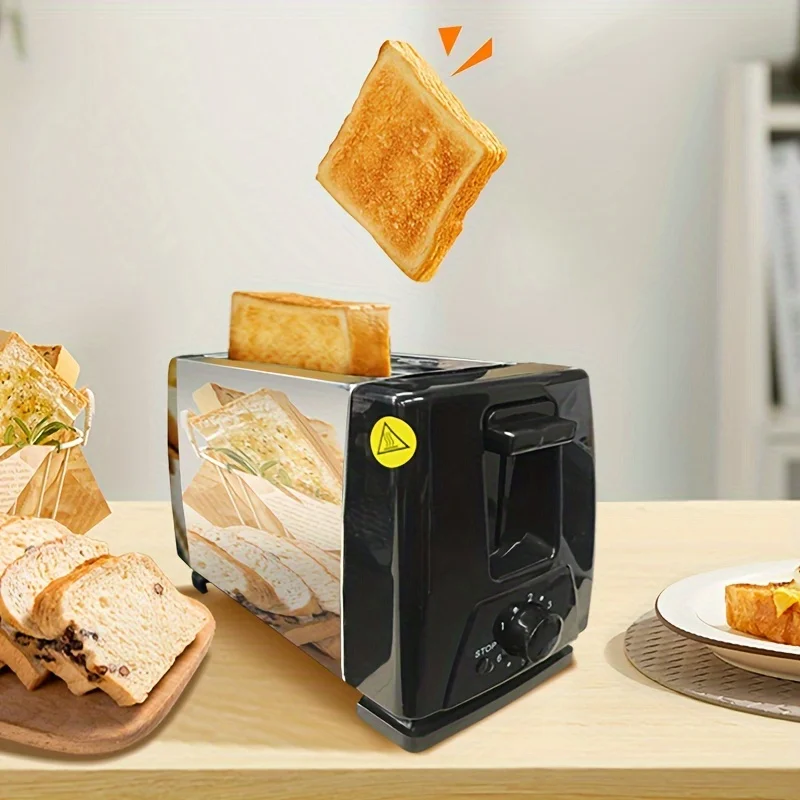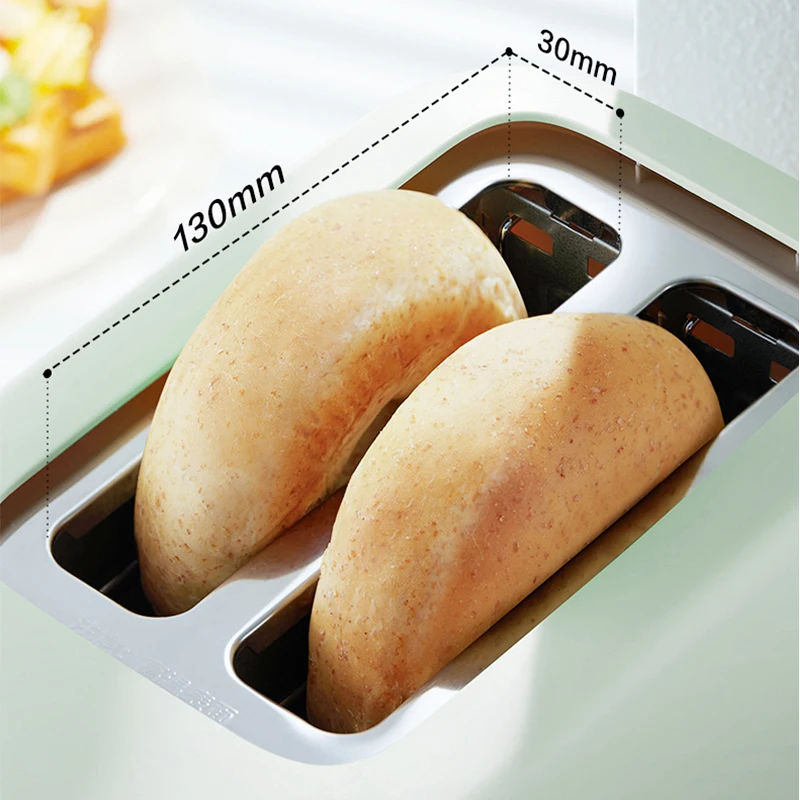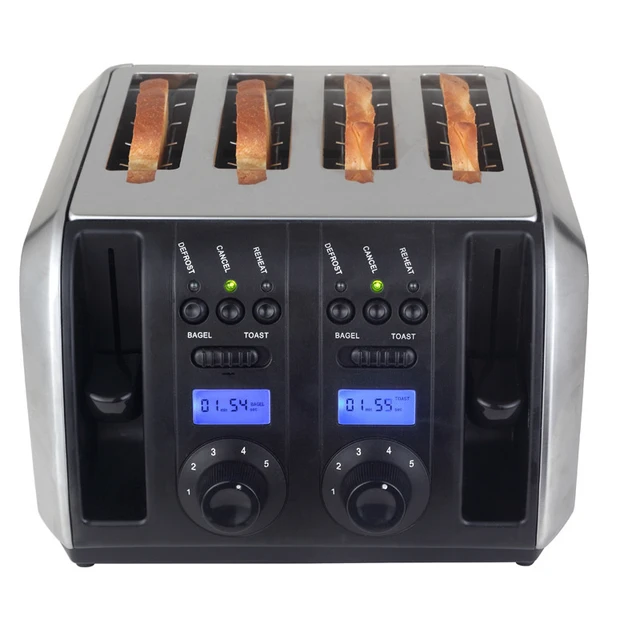Introduction: Understanding the Problem
A toaster is a kitchen appliance that brings convenience and efficiency to our morning routine. However, encountering the frustrating issue of a toaster not staying down can disrupt our breakfast plans. When the toaster lever pops up prematurely, preventing bread or other items from toasting properly, it is essential to address the problem promptly. In this comprehensive guide, we will explore potential causes and practical solutions to resolve the issue of a toaster not staying down, allowing you to enjoy perfectly toasted bread once again.

Resolving the Issue: Toaster Not Staying Down
-
Identifying Common Causes
a. Mechanical malfunction: Over time, the internal mechanical components of a toaster, such as the spring or latch mechanism, can wear out or become faulty. This can prevent the toaster lever from staying down when engaged.
b. Crumbs or debris: Accumulation of crumbs or debris at the bottom of the toaster can interfere with the lever’s ability to latch securely in the down position. The presence of crumbs can hinder proper engagement, causing the lever to pop up prematurely.
c. Uneven surfaces: Placing a toaster on an uneven or unstable surface may disrupt its balance. Uneven surfaces can prevent the toaster’s internal mechanism from functioning correctly, leading to the lever popping up unexpectedly.
d. Electrical issues: A malfunctioning electrical component, such as a thermostat or timer, can cause the toaster to prematurely release the lever, preventing it from staying down during the toasting process.

-
Practical Solutions
a. Resetting and unplugging: Start by unplugging the toaster from the power source. This action not only ensures safety during troubleshooting but may also reset internal electrical components. Leave the toaster unplugged for a few minutes before plugging it back in to see if this resolves the issue.
b. Cleaning the toaster: To eliminate any potential debris causing the lever to malfunction, clean the toaster thoroughly. Begin by removing the crumb tray and emptying it into a trash bin. Next, turn the toaster upside down and gently tap it to dislodge any loose crumbs. Use a small brush or toothbrush to remove crumbs and debris from hard-to-reach areas. Finish by wiping the exterior surfaces with a damp cloth, ensuring that the toaster is completely dry before use.
c. Checking for obstructions: Inspect the toaster’s interior for any visible obstructions or foreign objects that may be impeding the proper engagement of the lever. Use a flashlight and inspect carefully, removing any debris or objects discovered.
d. Adjusting level surfaces: If the toaster is sitting on an uneven or wobbly surface, relocate it to a level and stable countertop or table. A balanced position allows for proper engagement of the toaster’s internal mechanism, ensuring the lever stays down during the toasting process.

-
Further Troubleshooting
a. Checking the cord and plug: Inspect the toaster’s power cord and plug for any signs of damage, such as fraying or exposed wires. Damaged cords or plugs can lead to electrical issues that affect the toaster’s operation. If damage is found, it may be necessary to replace the cord or consult a professional for repairs.
b. Testing on a different outlet: Plug the toaster into a different electrical outlet to determine if the issue persists. A faulty outlet can sometimes cause electrical disruptions that affect the toaster’s functioning. If the toaster operates correctly on a different outlet, it is advisable to contact an electrician to inspect and repair the original outlet.
c. Contacting manufacturer or professional repair service: If the issue persists after attempting the aforementioned solutions, it may be necessary to contact the toaster’s manufacturer or a professional repair service. They can provide specialized guidance or assistance in diagnosing and resolving the problem.
-
Preventative Measures
a. Regular cleaning and maintenance: To prevent future issues with the toaster not staying down, establish a routine of cleaning and maintenance. Make it a habit to empty and clean the crumb tray regularly. Additionally, wipe the toaster’s exterior surfaces and check for any signs of wear or malfunction.
b. Avoiding excessive force or weight: Avoid pressing down on the toaster lever with excessive force or placing heavy objects on top of the toaster. These actions can strain the toaster’s internal mechanism, leading to premature lever release or other malfunctions.
c. Upgrading to a new toaster: If the problem reoccurs frequently or persists despite attempts to rectify it, it may be time to consider replacing the toaster with a new one. Investing in a newer and more reliable model can ensure optimal performance and alleviate any ongoing issues.

-
Safety Precautions
a. Always prioritize safety when dealing with electrical appliances. Unplug the toaster from the power source before attempting any troubleshooting or maintenance.
b. Avoid using sharp or pointed objects to remove debris or obstructions from the toaster, as this can cause damage to the internal components or pose a risk of injury. Instead, use brushes, toothpicks, or other non-abrasive tools to gently dislodge any debris.
c. If you are unsure about handling electrical components or are uncomfortable with troubleshooting procedures, it is advisable to seek professional assistance. Electricians or appliance repair technicians have the expertise to diagnose and repair toaster malfunctions safely and effectively.
-
Regular Maintenance for Optimal Performance
a. To prevent future issues with the toaster not staying down, establish a regular maintenance routine. This includes periodic cleaning of the crumb tray and interior to remove any accumulated debris.
b. Inspect the power cord for any signs of wear or damage. If the cord appears frayed or compromised, it should be replaced to prevent electrical hazards.
c. Keep the toaster in a clean and dry environment, and avoid placing it near water sources or areas prone to moisture. Moisture can cause electrical malfunction and increase the risk of accidents.
d. Refer to the manufacturer’s instructions for specific maintenance guidelines and recommendations unique to your toaster model. Following these guidelines will help ensure the longevity and optimal performance of your toaster.

Conclusion: Toasting Success Restored
While a toaster not staying down may seem like a major inconvenience, identifying the cause and implementing practical solutions can restore the functionality of this essential kitchen appliance. By troubleshooting potential mechanical malfunctions, checking for debris or obstructions, ensuring level surfaces and electrical connections, and seeking assistance from professionals if needed, you can once again enjoy perfectly toasted bread and breakfast treats.
Maintaining the cleanliness and proper care of the toaster, as well as avoiding excessive force or weight, will aid in preventing similar issues in the future. If all else fails, the option of upgrading to a new toaster can provide a long-term solution to ensure reliable toasting enjoyment for years to come.


